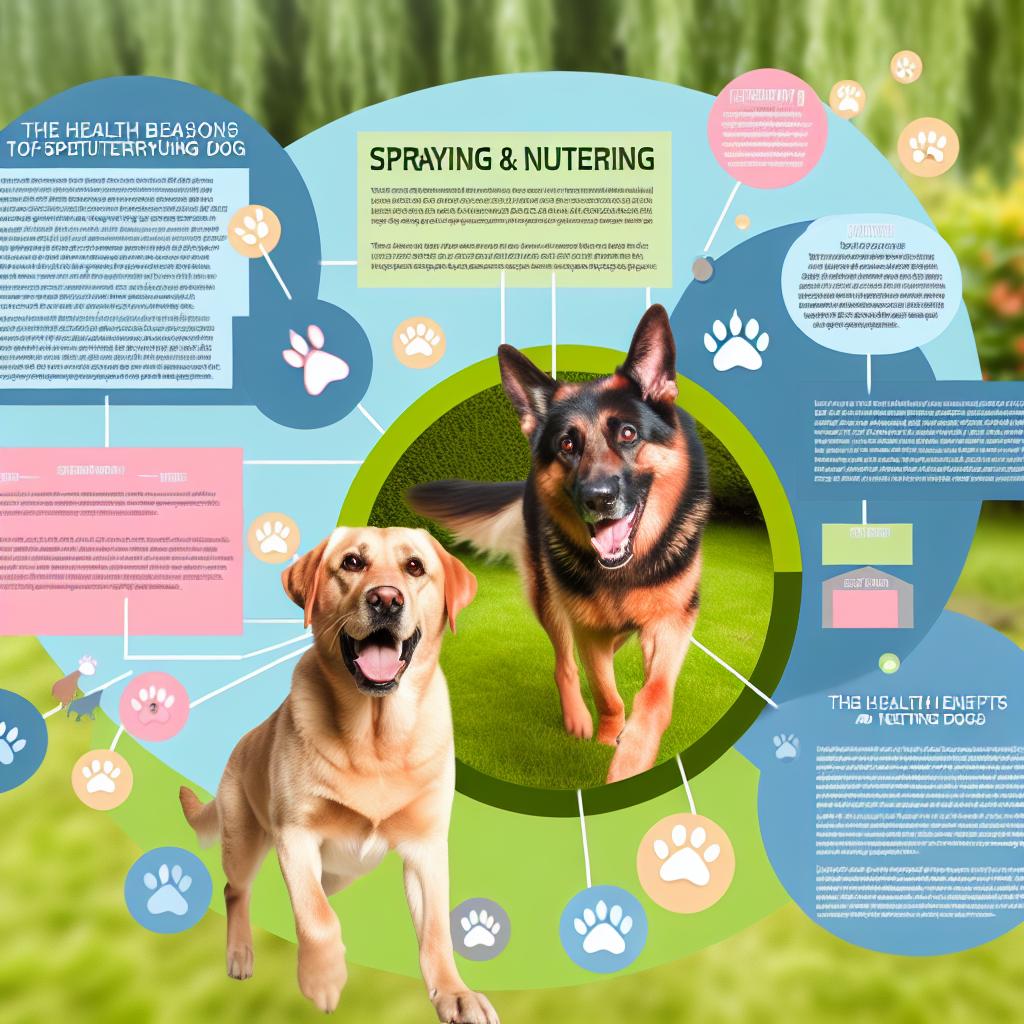
Spaying and neutering are common surgical procedures recommended for many pets, including dogs. These procedures involve the removal of reproductive organs to prevent unwanted litters. There are multiple reasons why these procedures are beneficial for both pet owners and the broader community.
Spaying and neutering can significantly enhance the health of your dog. For female dogs, spaying can help prevent uterine infections and breast tumors, which are cancerous in approximately 50% of dogs. Neutering male dogs can mitigate the risk of certain types of prostate and testicular cancers. Both procedures can thus directly contribute to a longer and healthier life for your pet.
Spaying offers significant long-term health benefits to female dogs, primarily due to the reduction in the risk of potentially fatal health conditions. Uterine infections, known as pyometra, can be particularly dangerous and require costly treatments if they occur, but spaying effectively eliminates this risk. Breast tumors, another concern for unspayed female dogs, are drastically reduced when spaying is performed before the first heat cycle.
For male dogs, neutering addresses various health issues by removing the testes, which eliminates the chance of testicular cancer entirely. It also reduces the likelihood of prostate problems, which can lead to urinary difficulties and other complications in older age. Overall, these procedures can reduce your dog’s risk of facing serious health conditions that might otherwise lead to pain or an early death.
One noteworthy benefit of neutering male dogs is a decrease in aggressive behavior and the likelihood of roaming. Male dogs often roam in search of mates, increasing the risk of them getting lost or injured. Additionally, spaying and neutering can reduce marking and mounting behaviors, leading to a more well-behaved pet.
Dogs that are not spayed or neutered are often driven by hormones that can influence behaviors such as aggression. This can affect their compatibility with other pets and humans, creating challenging dynamics at home. Neutering male dogs tends to decrease aggressive tendencies because it reduces testosterone levels, which is often the cause of these behaviors.
Moreover, dogs that continually roam are exposed to dangers such as traffic accidents or fights with other animals. By limiting these urges, neutering promotes a safer and more content environment for your pet. Spayed and neutered dogs also show reduced mounting behaviors and marking their territory with urine, which are common troublesome behaviors for dog owners.
The overpopulation of dogs is a significant issue, contributing to overcrowded shelters and euthanasia. Spaying and neutering your dog helps to control this population, reducing the number of stray animals on the streets. This not only benefits community resources but also lowers the risk of diseases that can be spread between animals and humans, such as rabies.
Without spaying and neutering, many dogs end up in shelters, which are often overwhelmed by the number of animals they receive. Overcrowded shelters lead to higher euthanasia rates, as there simply aren’t enough resources to care for all animals. By preventing unwanted litters, pet owners can play a crucial role in reducing the burden on these shelters and improving the quality of life for all animals.
Additionally, stray animals can be vectors for zoonotic diseases, those that can be transferred from animals to humans. Reducing the number of strays thereby decreases the potential transmission of these diseases, improving public health safety. Communities benefit from safer environments and reduced animal control costs by maintaining balanced pet populations.
Though there is an upfront cost associated with spaying or neutering, it can be financially beneficial in the long run. The cost of surgery is far less than raising litters or dealing with health issues that arise from reproductive cancers. Many veterinary clinics and animal shelters offer affordable options, making these procedures accessible to pet owners. For more information on finding low-cost spay/neuter programs, visit ASPCA’s spay/neuter services.
The initial expense of spaying or neutering may seem significant, but it must be weighed against potential future costs. Caring for a litter of puppies involves food, vaccinations, and veterinary checks, rapidly accumulating substantial costs. Unplanned litters can catch owners unprepared, leading to financial strain.
Moreover, treating health complications such as cancer and infections, which spaying and neutering can help prevent, often involves costly surgeries, medication, and lengthy recovery periods. By investing in these surgeries, owners are likely to save on potential medical bills over the lifetime of their pet. Many organizations recognize the financial barrier to spaying and neutering, so numerous programs exist to assist pet owners in addressing costs.
By choosing to spay or neuter, pet owners make a conscious decision to promote a healthier life for their pets while contributing positively to their community. Taking these steps fosters a compassionate approach to pet ownership that recognizes the broader implications of animal overpopulation. Integrating such responsible practices can lead to lasting improvements, not only for individual pets but also for communities as a whole. Through these efforts, pet owners can ensure loving homes for future generations of dogs and promote harmony in their interactions with humans and other animals alike.